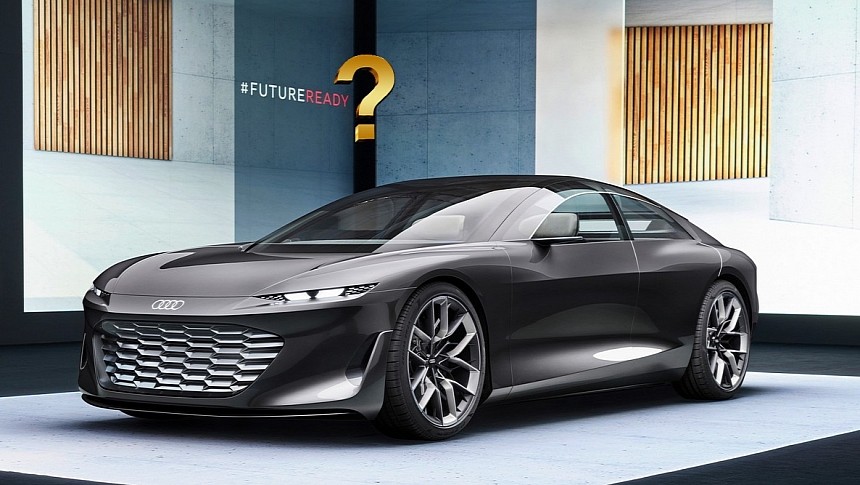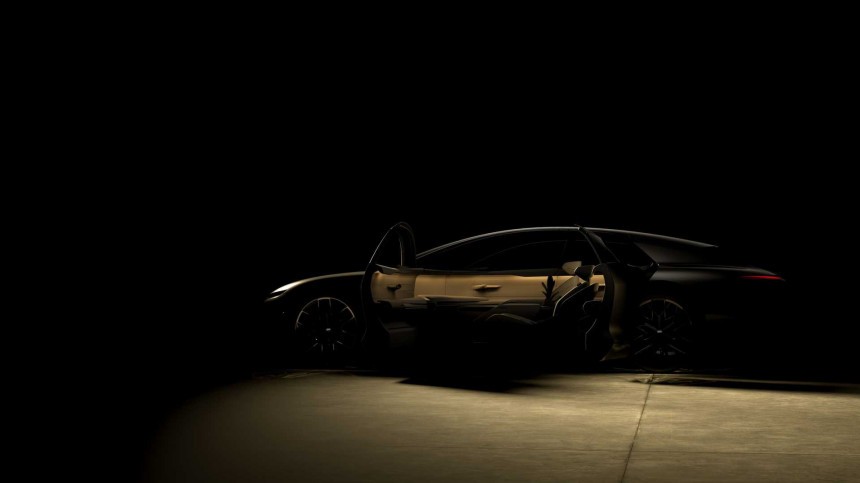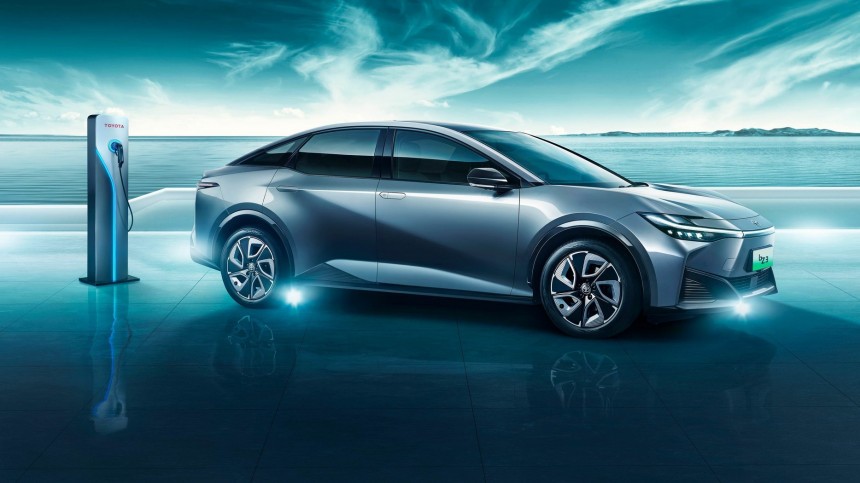You must have heard that Audi is considering buying an electric architecture from a Chinese company to produce battery electric vehicles (BEVs). Automobilwoche revealed that on July 9. Greg Kable brought more details on July 12: the German carmaker would be about to sign a deal with SAIC to use an IM platform. What nobody has done so far was digging deeper into why Audi is doing that. The quick answer is despair.
The sources that revealed the story said that the German carmaker decided to buy a Chinese electric architecture because the development of the Scalable Systems Platform (SSP) is taking too long. That would be a massive defeat acknowledgment if it were true, but it is not. As early as March 2021, Volkswagen said that the SSP would underpin Project Trinity's first vehicle in 2025, a 2026 model-year flat (low) BEV. That did not change that much: the German carmaker is now saying the SSP will make its premiere in 2026.
Audi's desperation emerges from another reason: it cannot wait that long in the Chinese market, the world's largest and the most important for the Volkswagen Group. The company badly miscalculated the change speed in China, which it dominated until BYD beat it at the beginning of 2023. That must have sounded a loud alarm within Volkswagen's top management. Remember that Ralf Brandstätter moved to China to take care of business there in August 2022. Before that, he was a strong candidate to replace Herbert Diess as the group's CEO, but Oliver Blume got there first. Automobilwoche said he already approved the idea of using a Chinese platform, probably urged to do so by Brandstätter.
The deal is that the Chinese government has been pushing for electric vehicles for quite a while. Chinese megalopolises face a terrible pollution problem that covers the skies with a thick layer of smog on the worst days. Medical expenses with respiratory diseases must have driven the CCP to determine BEVs were the easiest way out. In a country that processes most raw materials for lithium-ion cells and has some of the largest battery manufacturers in the world, that made a lot of sense.
Local automakers also were smart enough to turn that into a competitive advantage. Foreign car companies had to care about scale, ensured by what they sold elsewhere: ICE vehicles. When the rest of the world decided BEVs were the silver bullet for climate change – even if they aren't – Chinese carmakers were ahead of the curve. Apart from Tesla, everybody else was late to develop electric cars – particularly in China, where they are now necessary for good sales numbers. Volkswagen thought its ID family and the MEB would be enough to do well in the world's largest market, but it wasn't. They did not work even in Europe, where the company had to cut production because demand was too low. The fastest way to tackle the situation is to use a platform that already exists.
That would not be the first case of a foreign company using a Chinese architecture to build its BEVs. Toyota did that in October 2022 with BYD and the bZ3, the electric Corolla. The Japanese carmaker probably has other electric vehicles in the pipeline for the Chinese market, all of them in a partnership with BYD – the company that is now leading sales in China instead of Volkswagen.
In Toyota's case, that has to do with the certainty that battery electric vehicles need better technology to become mainstream, which is why the Japanese automaker is waiting for solid-state cells. The alliance with BYD enabled it to keep selling cars in China until its revolutionary batteries are ready for prime time. In other words, the partnership with the Chinese carmaker is a way to buy time in a relevant market. Toyota may even consider exporting these Chinese vehicles to Europe, something Tesla, BYD, and MG already do. However, you should not see these cars in Japan or the US.
Volkswagen's situation is a lot different. It decided to become an electric car company and invested billions to get there. The German carmaker frequently states that fuel cells and hybrids are a waste of time and that BEVs are the future. It does not even acknowledge the shortcomings these vehicles present, such as battery pack life and charging times. For a company that is all-in on BEVs, not having the right products or the right schedule for new ones can become an emergency. This is why Audi is probably asking for help in China.
IM Motors belongs to SAIC, a company with which Volkswagen has a joint venture in the world's largest car market. Until very recently, that was the only way foreign companies could sell vehicles in China. In that sense, the platform purchase will happen with an old partner, a company that has also used Volkswagen architectures in the past. In a sense, it's SAIC's turn to scratch the German carmaker's back. The deal is that no one ever saw that coming, mainly because of how proud Volkswagen has always been of its engineering team. If the platform purchase is confirmed, it will be interesting to see how Audi will justify its urge for a competitive architecture that the Volkswagen Group did not know it would need so soon.
Audi's desperation emerges from another reason: it cannot wait that long in the Chinese market, the world's largest and the most important for the Volkswagen Group. The company badly miscalculated the change speed in China, which it dominated until BYD beat it at the beginning of 2023. That must have sounded a loud alarm within Volkswagen's top management. Remember that Ralf Brandstätter moved to China to take care of business there in August 2022. Before that, he was a strong candidate to replace Herbert Diess as the group's CEO, but Oliver Blume got there first. Automobilwoche said he already approved the idea of using a Chinese platform, probably urged to do so by Brandstätter.
The deal is that the Chinese government has been pushing for electric vehicles for quite a while. Chinese megalopolises face a terrible pollution problem that covers the skies with a thick layer of smog on the worst days. Medical expenses with respiratory diseases must have driven the CCP to determine BEVs were the easiest way out. In a country that processes most raw materials for lithium-ion cells and has some of the largest battery manufacturers in the world, that made a lot of sense.
That would not be the first case of a foreign company using a Chinese architecture to build its BEVs. Toyota did that in October 2022 with BYD and the bZ3, the electric Corolla. The Japanese carmaker probably has other electric vehicles in the pipeline for the Chinese market, all of them in a partnership with BYD – the company that is now leading sales in China instead of Volkswagen.
Volkswagen's situation is a lot different. It decided to become an electric car company and invested billions to get there. The German carmaker frequently states that fuel cells and hybrids are a waste of time and that BEVs are the future. It does not even acknowledge the shortcomings these vehicles present, such as battery pack life and charging times. For a company that is all-in on BEVs, not having the right products or the right schedule for new ones can become an emergency. This is why Audi is probably asking for help in China.
IM Motors belongs to SAIC, a company with which Volkswagen has a joint venture in the world's largest car market. Until very recently, that was the only way foreign companies could sell vehicles in China. In that sense, the platform purchase will happen with an old partner, a company that has also used Volkswagen architectures in the past. In a sense, it's SAIC's turn to scratch the German carmaker's back. The deal is that no one ever saw that coming, mainly because of how proud Volkswagen has always been of its engineering team. If the platform purchase is confirmed, it will be interesting to see how Audi will justify its urge for a competitive architecture that the Volkswagen Group did not know it would need so soon.






























